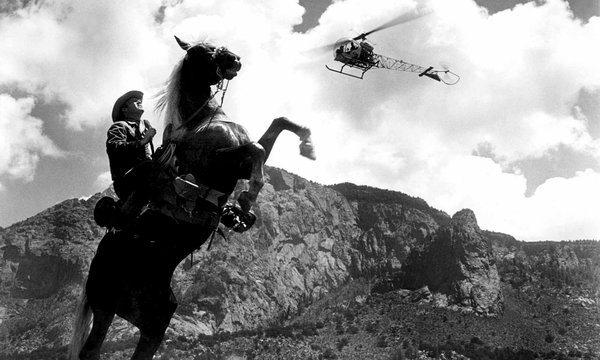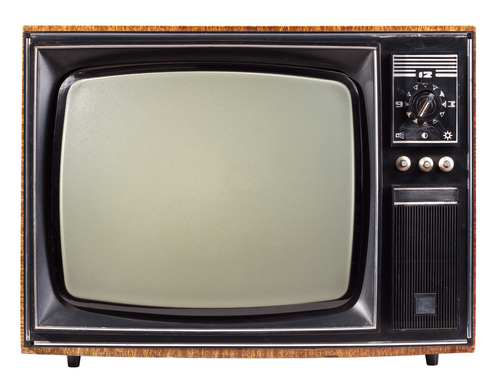|
The Fretful Birth of the New Western
Posted on: 08/03/12
 Kirk Douglas in “Lonely Are the Brave” (1962), adapted from a novel by Edward Abbey. By ALEX COXPublished: July 27, 2012KIRK DOUGLAS was worried. It was 1961, and this actor-producer had recently gambled on a big history picture, “Spartacus.” He had fired the director — Anthony Mann — after a week of shooting, replacing him with Stanley Kubrick. Mr. Douglas thought the picture had turned out well, but it still hadn’t been released. Meanwhile he had encountered a paperback novel — “The Brave Cowboy,” byEdward Abbey — and optioned it through his production company, Byrna. And Byrna, which had a production deal with Universal, commissioned a screenplay, by Dalton Trumbo. Mr. Douglas was gambling again, but playing a good hand. The material — the story of a modern-day cowboy who breaks into jail to rescue his best friend — is original for a western, and gets better as it goes along. Its screenwriter was talented and hard working. (Blacklisted and jailed after refusing to testify before the House Un-American Activities Committee, Trumbo had for 10 years written scripts under assumed names, winning an Oscar for one of them as Robert Rich. Mr. Douglas went to bat for Trumbo on “Spartacus,” promising him a screen credit with his real name.) And Trumbo had solved the story’s two biggest problems: Why was the hero’s best friend in jail in the first place? And why wouldn’t he leave? Abbey’s novel, published in 1956, is set a decade earlier, following the introduction of the military draft. Paul, the hero’s friend, has refused to register, not because he is a pacifist (he isn’t) but because he considers a draft unconstitutional. Like Abbey, Paul is an incipient libertarian or a patriotic anarchist. He has written the government and local authorities about his resistance to unjust authority and been given a year in jail. So it’s a moral imperative for Paul — when his old compadre John W. Burns shows up with two files and a plan to ride for Mexico — to turn him down. Fifty years after the release of that film, “Lonely Are the Brave,” westerns may not be much in evidence at the multiplex. But on the small screen this summer, complex takes on the genre like “Hell on Wheels” (returning Aug. 12 to AMC) and “Longmire” (which has drawn big ratings for A&E) are in vogue again, and it’s worth taking another look at one of the bleakest westerns ever to grace the big screen. In 1961, when Trumbo wrote the first version of the screenplay, it was unthinkable in Hollywood to feature a draft resister. It would be years before the Vietnam War made the draft an issue — so Trumbo, at his most sardonic, thought of an alternative crime for Paul: associating with parrot smugglers. This lasted one round of what is otherwise an excellent screenplay. In the next version, titled “The Last Hero,” Trumbo came up with another solution: Paul is in jail for assisting illegal immigrants find food and work. It was a prescient choice, anticipating the Sanctuary Movement of the 1980s and our current turmoil over undocumented workers. Having addressed Paul’s “crime of principle,” Trumbo follows Abbey’s novel closely: Burns gets locked up then busts himself and two Indians out of jail, heading for the hills on his coquettish horse, Whiskey. The film’s second half tracks Burns’s evasion of his pursuers and his encounter with a nemesis both inevitable and ludicrous. Trumbo shows a clear sense of location and landscape, including as his title page a hand-drawn map of the cowboy’s intended route, via the Sangre de Cristo and Manzano Mountains, into Mexico. Armed with a map, a great script, and a first-rate cast — he was playing Burns himself — Mr. Douglas seemingly had nothing to worry about. Yet on May 4, 1961, from the Western Skies Hotel in Albuquerque, with production already under way, he wrote a troubled letter. It was addressed to Mr. Gary Cooper, Beverly Hills. “Dear Coop,” he wrote. “When for years you’ve had affection for a guy and you find it suddenly turning to resentment, you begin to think it deserves some comment.” He went on to say, “Put yourself in my spot. I’m doing a picture that should have been done by only one guy. I know it — my entire company knows it. Start with the title — The Last Hero. Now whom does that fit — me? Hell, no!” Mr. Douglas complained to Cooper that his director, David Miller, was uncommunicative and focused on realism. The only direction Miller had given was, “try and play this the way Gary Cooper would.” Even worse had been Abbey’s arrival on set. Mr. Douglas reported that he’d driven to meet Abbey at the Albuquerque airport: “Fifty guys step off the plane but I spot him immediately — why? He looks like Gary Cooper. To make matters worse, when I meet him, he talks like Cooper!” For a moment it sounds as if Mr. Douglas the producer was angling for Cooper to take over the lead. But this was impossible. Cooper was terminally ill and would die nine days later. Certainly Mr. Douglas knew this when he wrote he wanted to follow in Cooper’s footsteps throughout the shoot: “I know now that at best I will come remotely close. But more important — I do know also that just trying to be you will make a better me.” Such heartfelt words acknowledged that outside help would not be forthcoming. It is the message of the film as well. Abbey’s presence looms over the film — both Burns and Paul contain aspects of his character — but did he really look like Cooper? To a certain extent. Did he really visit the set? Recalling Abbey after his death in 1989, Mr. Douglas wrote, “I never met Mr. Abbey, but we wrote to each other several times.” Which was it? Does it matter? Either way, the story of Abbey’s visit gave Mr. Douglas an opportunity to write a fan letter, and to prepare for a role he felt his mentor could have better played. As the pressmen conclude in “The Man Who Shot Liberty Valance,” the other great western made that year: If confronted with two conflicting versions, “print the legend.” Before the shoot Byrna put out a release emphasizing Miller’s realism: nonactors would be cast, a genuine painter would play Paul’s wife, the sets would showcase her work. It was all for naught: professional actors — Gena Rowlands, Walter Matthau, George Kennedy — were used instead. “The Brave Cowboy,” shot as “The Last Hero,” was released in 1962 as “Lonely Are the Brave” — elegantly photographed, theatrical rather than “natural,” exuberantly acted, deftly paced. There is no greater western, and certainly no more tragic one. Despite his doubts Mr. Douglas personified Burns, flouting cinematic rules by doing his own stunts and co-starring with an animal, a high spot of his career. It’s hard to imagine a film so radical, or so pessimistic, being made today. Though a Korean War hero, Burns refuses to carry ID or listen to reason. He disrespects the power company by cutting its barbed-wire fences; the county jail, by breaking out; the sheriff, whose manhunt he eludes; the military-industrial complex, whose helicopter he shoots down; and us, the viewers, who — when the lights go up or the DVD ends — return to a life played mainly by the rules. Remarkable for a low-budget western, “Lonely Are the Brave” poses uneasy questions about the idea, and value, of heroism. Do Paul’s principles justify abandoning his wife and child? Where does Burns’s extraordinary journey lead? COMMENTS
Be the first to post a comment! Post A Comment:

|
.gif)



.jpg)

